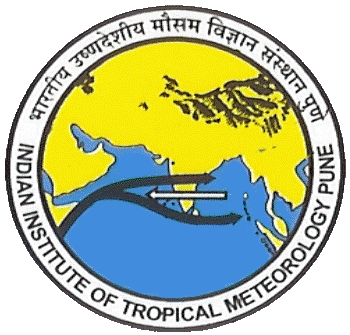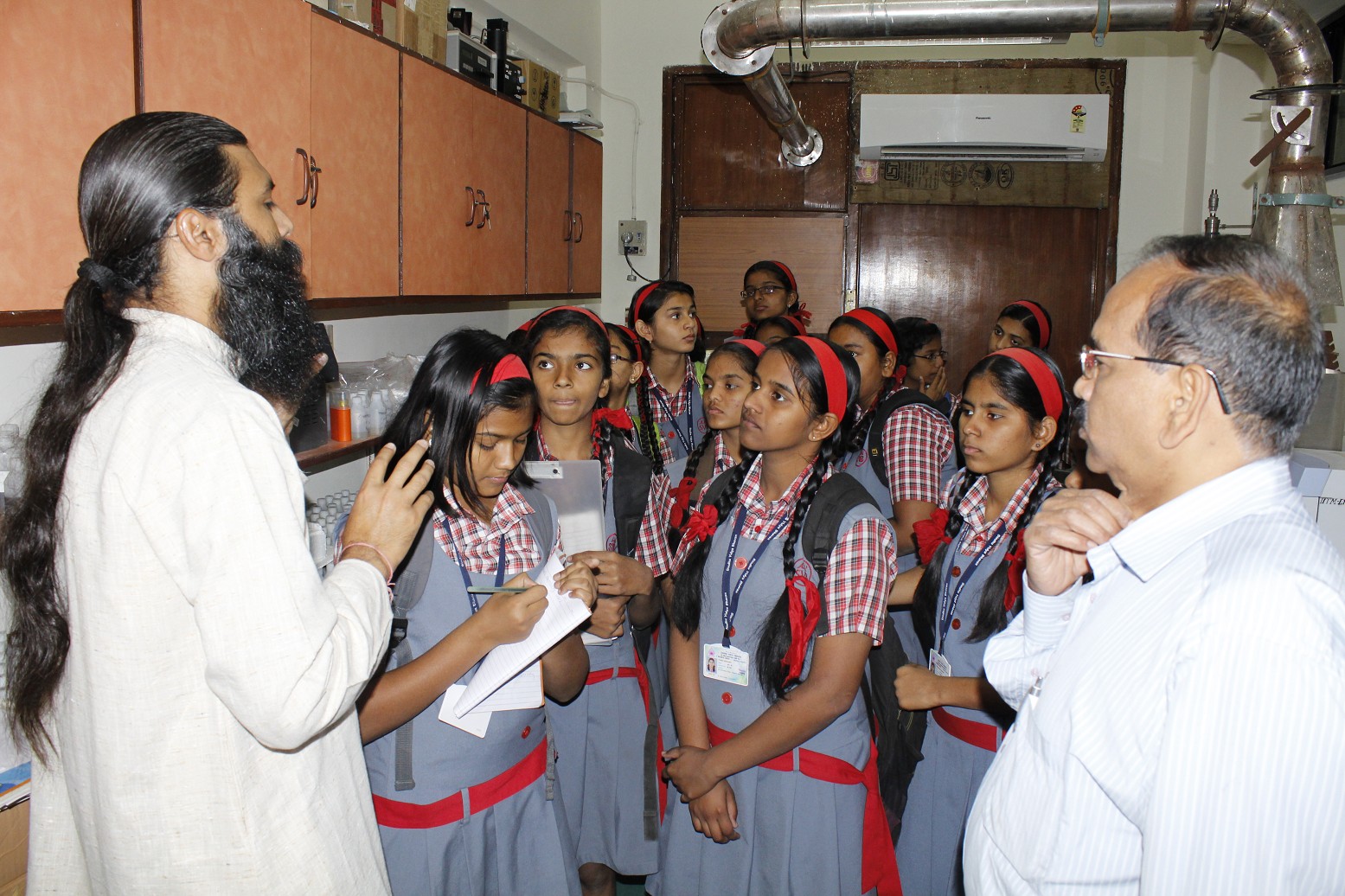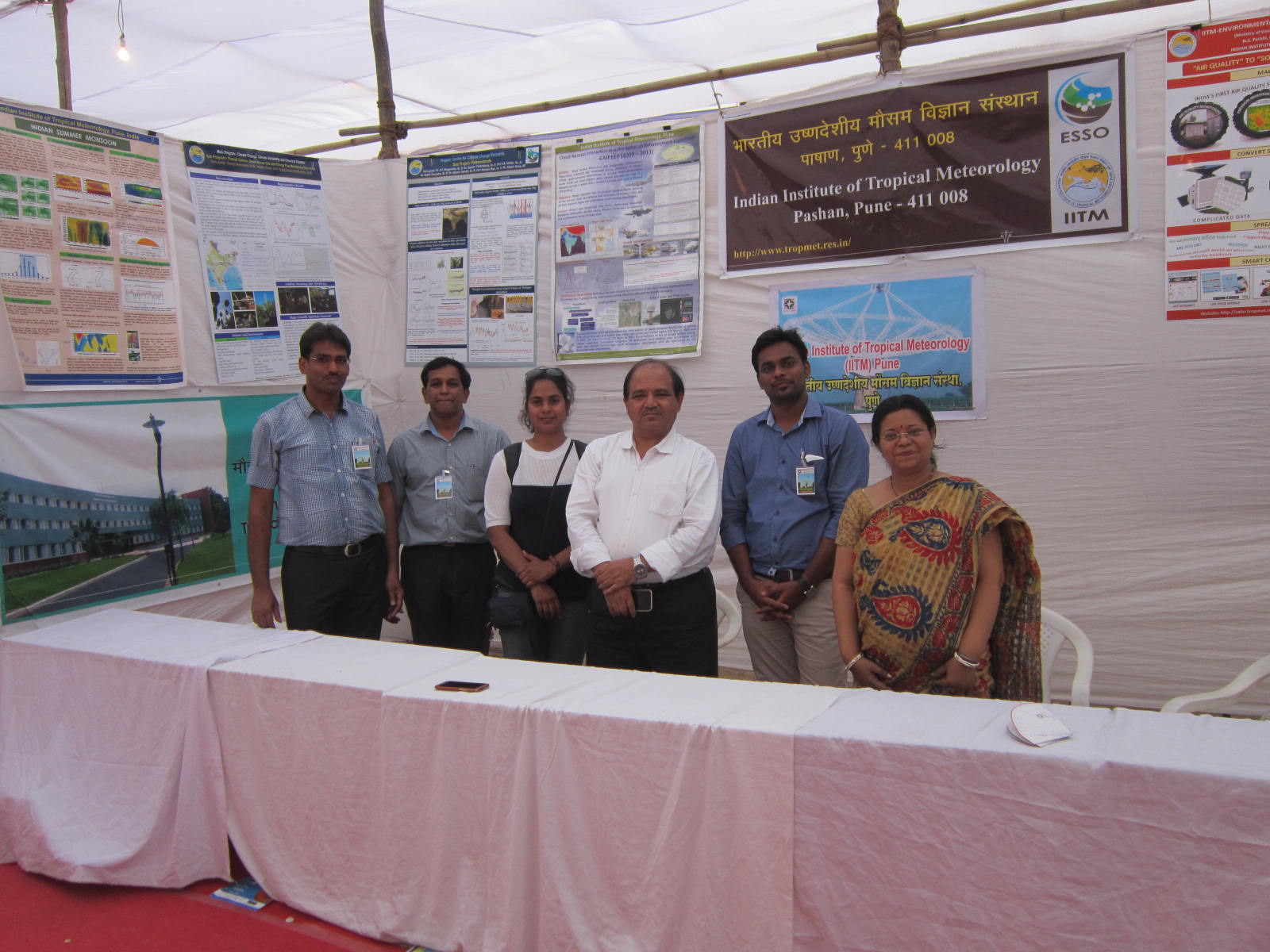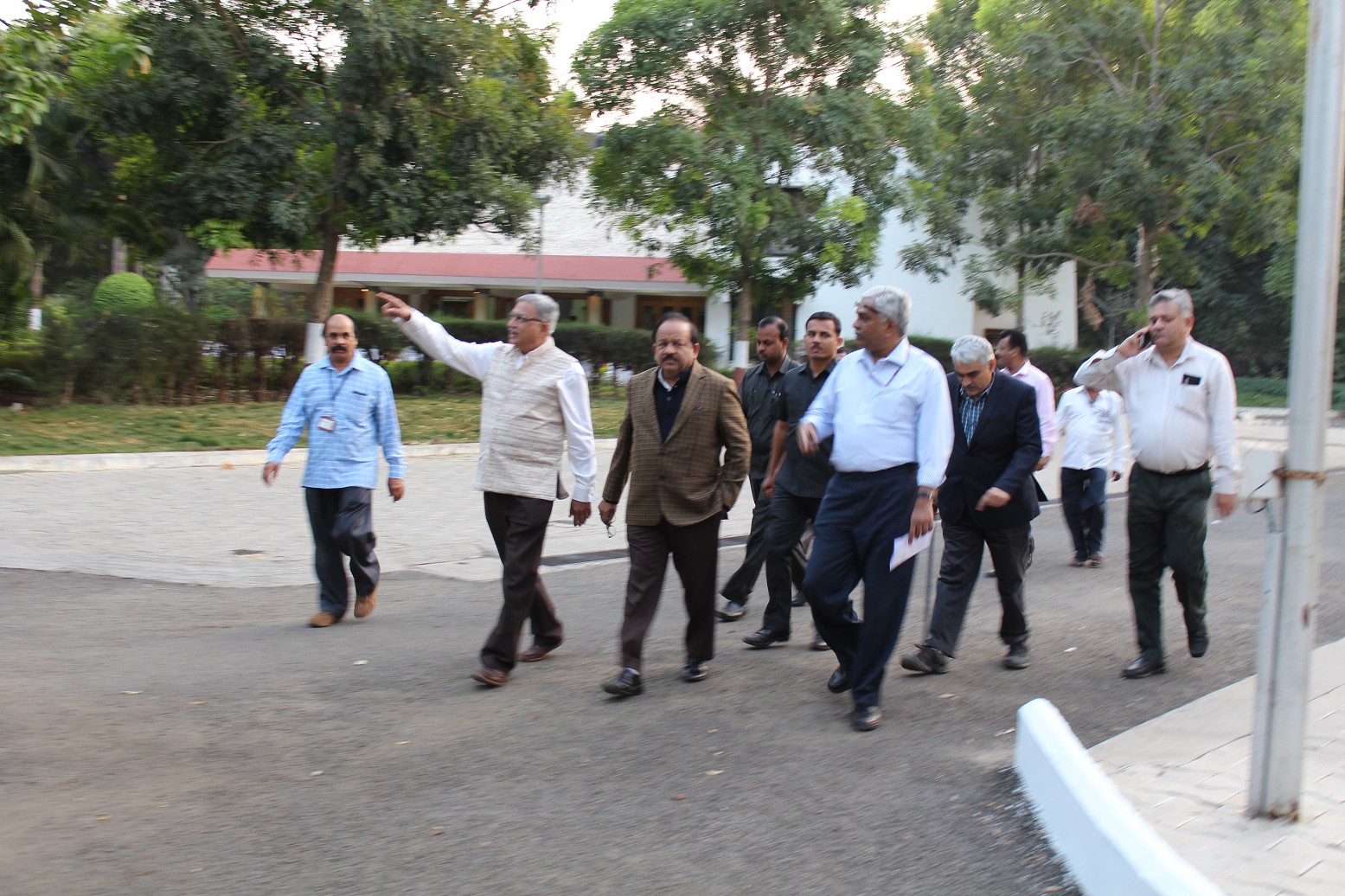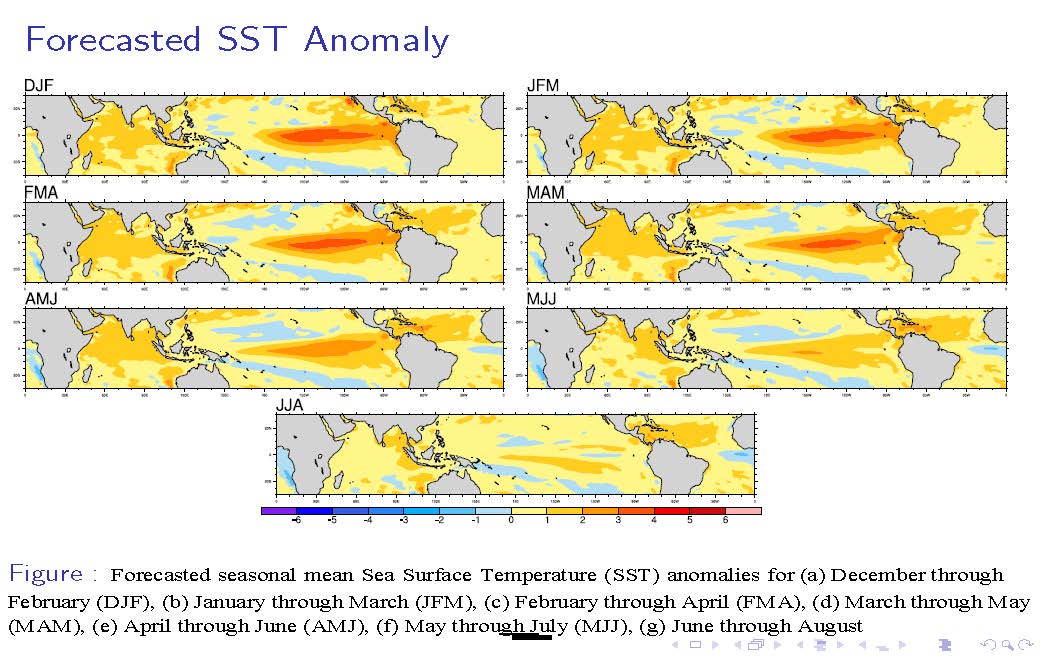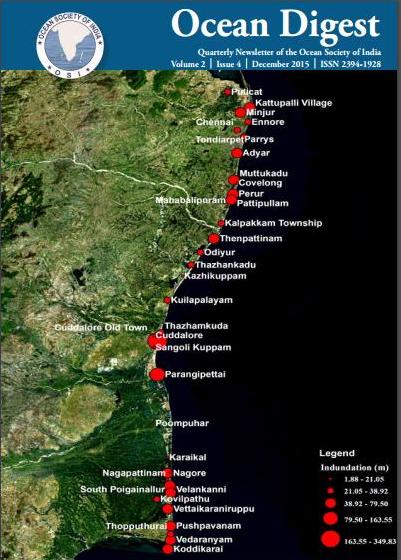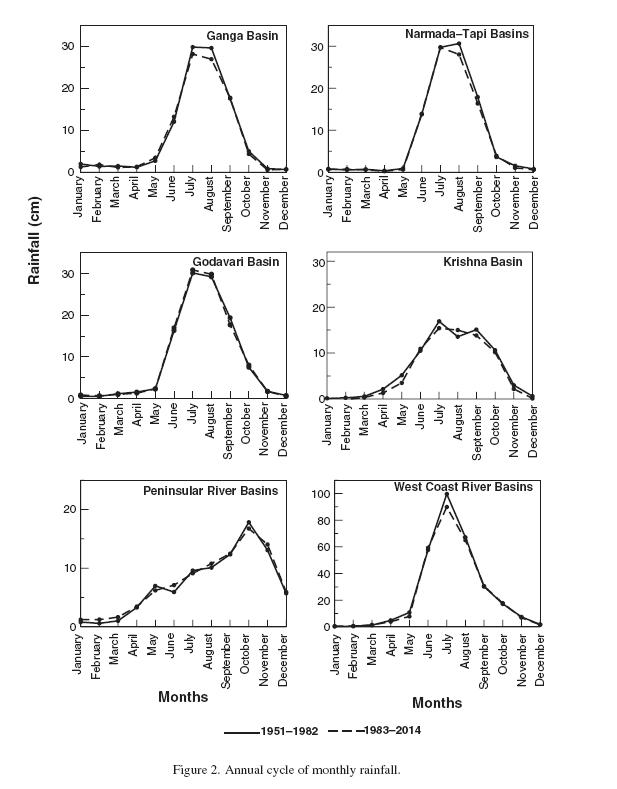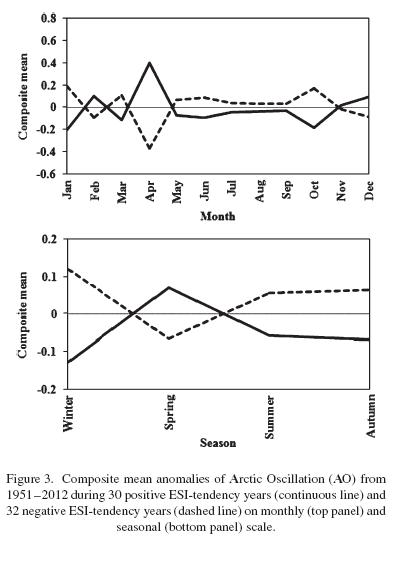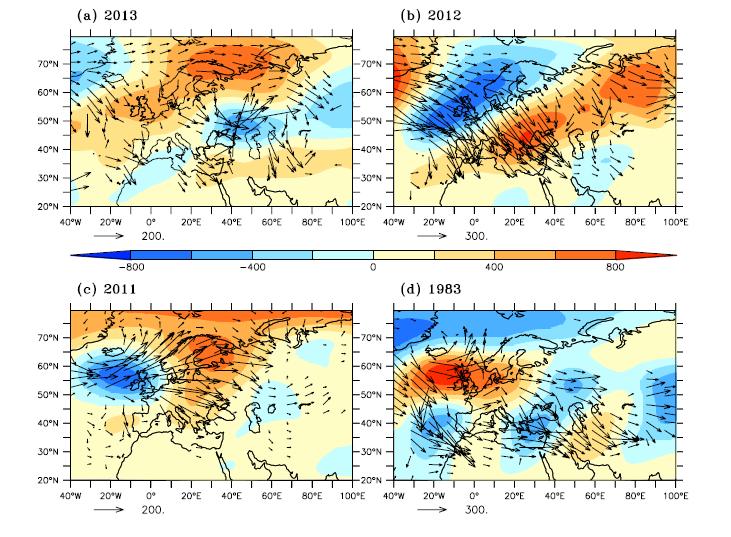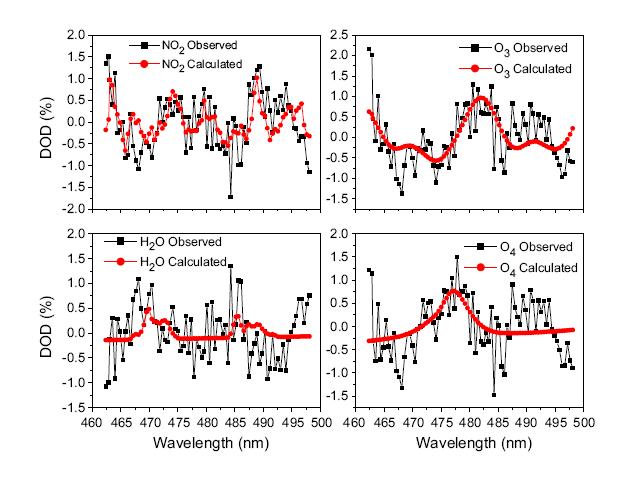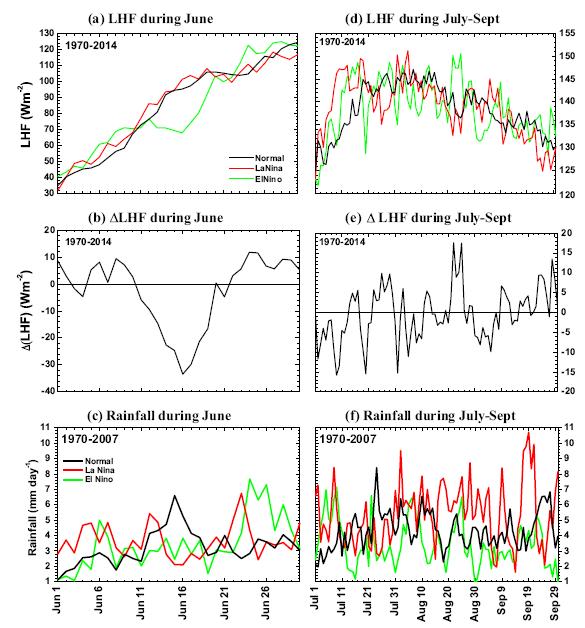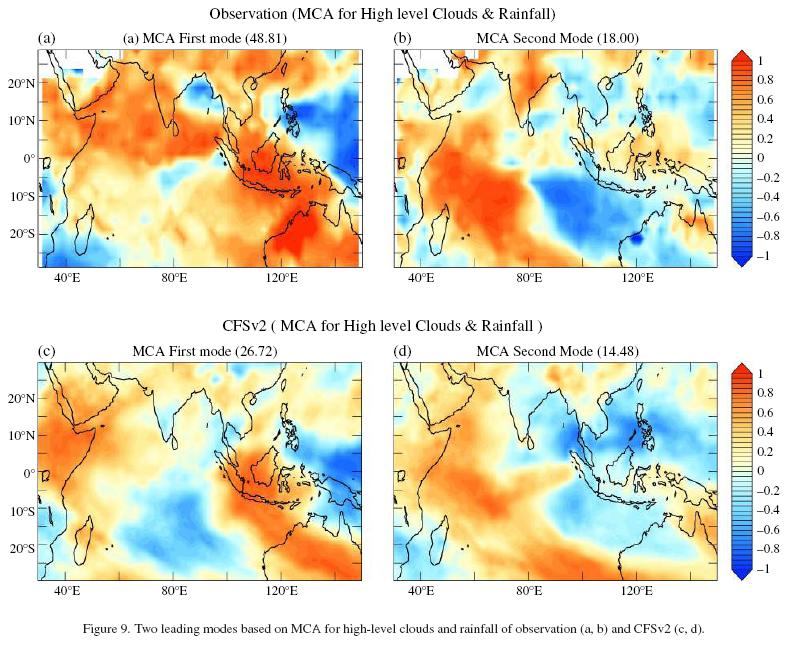IITM Publication Highlights
Atmospheric controls on the precipitation isotopes over the Andaman Islands, Bay of Bengal
|
Isotopic analysis of rainfall at Port Blair, Andaman Island reveals that rain water isotopes undergo systematic depletions in response to the organized convection occurring over a large area and are modulated by the integrated effect of convective activities. Precipitation isotopes appear to be linked with the monsoon intraseasonal variability in addition to synoptic scale fluctuations. Very high depletion was observed in rain water isotopic values during the events of intense cyclonic activities in the Bay of Bengal. This anomaly is likely to leave its imprint in the isotopic composition of stalagtites/stalagmites growing in the coastal regions of Bay of Bengal, which may be used as a tool to study the past cyclonic activities when no instrumental data is available. Read more... (S. Chakraborty, N. Sinha, R. Chattopadhyay, S. Sengupta, P. M. Mohan & A. Datye, Scientific Reports, Jan 2016) |
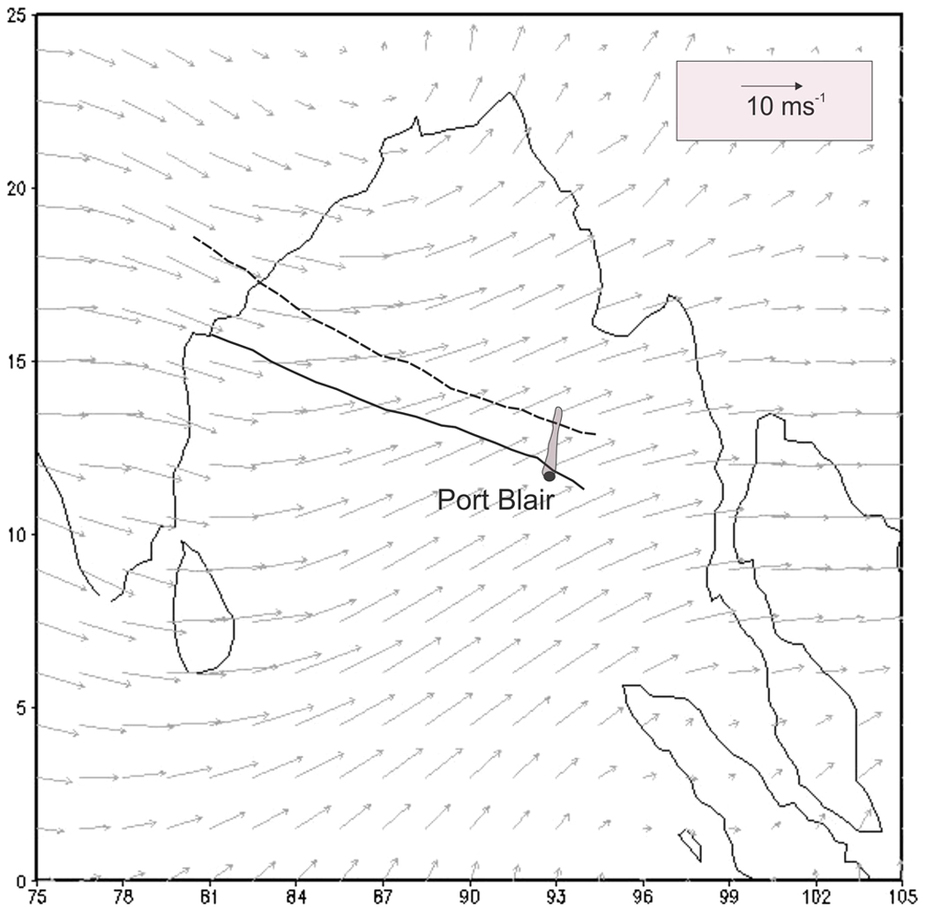
|
On the possible cause of distinct El Nino types in the recent decades
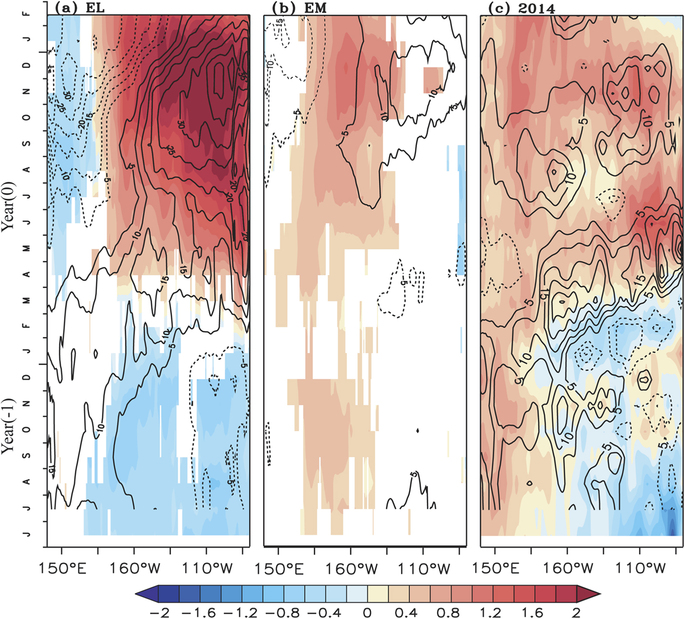 |
The study addresses the triggering mechanism for different flavours of El Nino in the recent decades. The results show that stronger boreal spring (Mar-May) through summer (June-September) westerly wind anomalies (WWA), with relatively stronger ocean pre-conditioning result in canonical El Nino, weaker ocean pre-conditioning and weaker WWA generate El Nino Modoki or central Pacific El Nino, stronger ocean preconditioning and weaker WWA lead to a basin wide warming pattern. The strength of the WWA is crucial in determining the strength of the ocean dynamic response and the thermocline displacements in the Pacific. The study has important implications for understanding the nature of El Nino in advance. Read more... (Jyoti J, Swapna P, Shamal M. and K. Ashok, Scientific Reports , Nov. 2015) |
Simulation of the Indian Summer Monsoon in the Superparameterized Climate Forecast System (SP-CFS) Version 2: Preliminary Results
|
Analysis of 5-yr (from 1 January 2009 to 31 December 2013) free run of the superparameterized (SP) Climate Forecast System (CFS) version 2 (CFSv2) (SP-CFS), implemented for the first time at a spectral triangular truncation at wavenumber 62 (T62) atmospheric horizontal resolution, is presented. The SP-CFS simulations are evaluated against observations and traditional convection parameterized CFSv2 simulations at T62 resolution as well as at some higher resolutions. The SP-CFS significantly reduces the dry bias of precipitation over the Indian subcontinent (Figure 1.) and better captures the monsoon intraseasonal oscillation (MISO) modes and convectively coupled Equatorial Waves (Figure 2). This analysis of the development of SP-CFS is particularly important as it shows promise for improving the cloud process representation through an SP framework and is able to improve the mean as well as intraseasonal characteristics of CFSv2 within the context of the ISM. Read more... (Goswami B.B., Krishna R.P.M., Mukhopadhyay P., Khairoutdinov M., Goswami B.N., Journal of Climate, Nov 2015) |
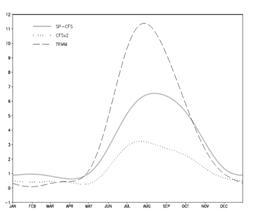
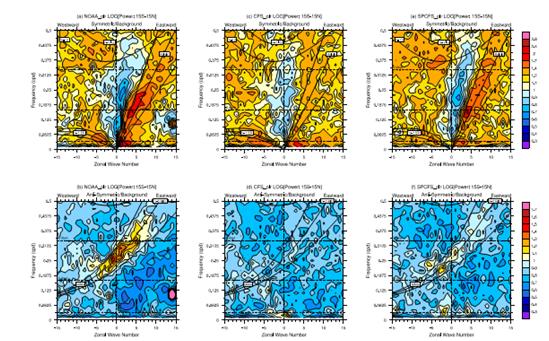
|
